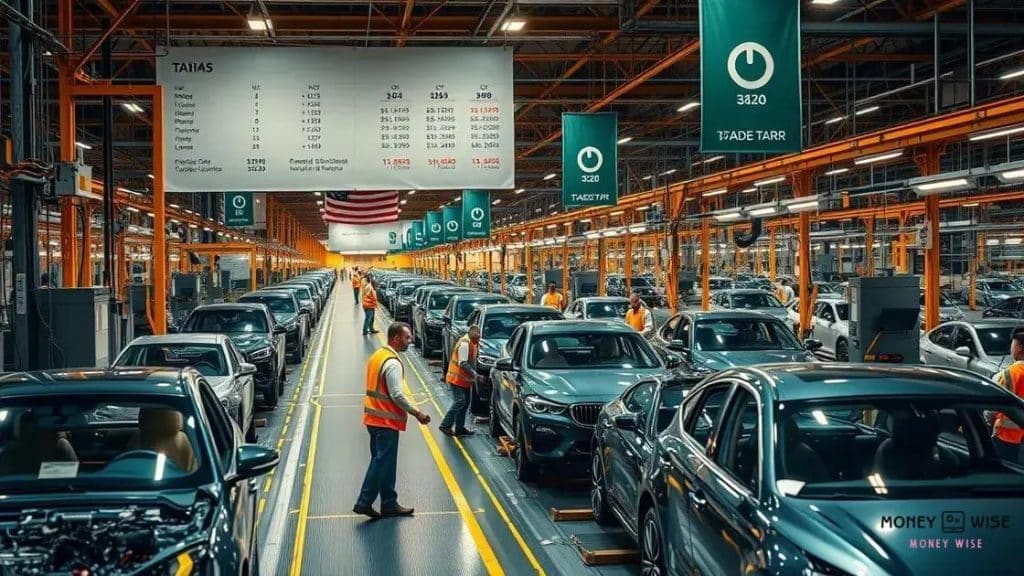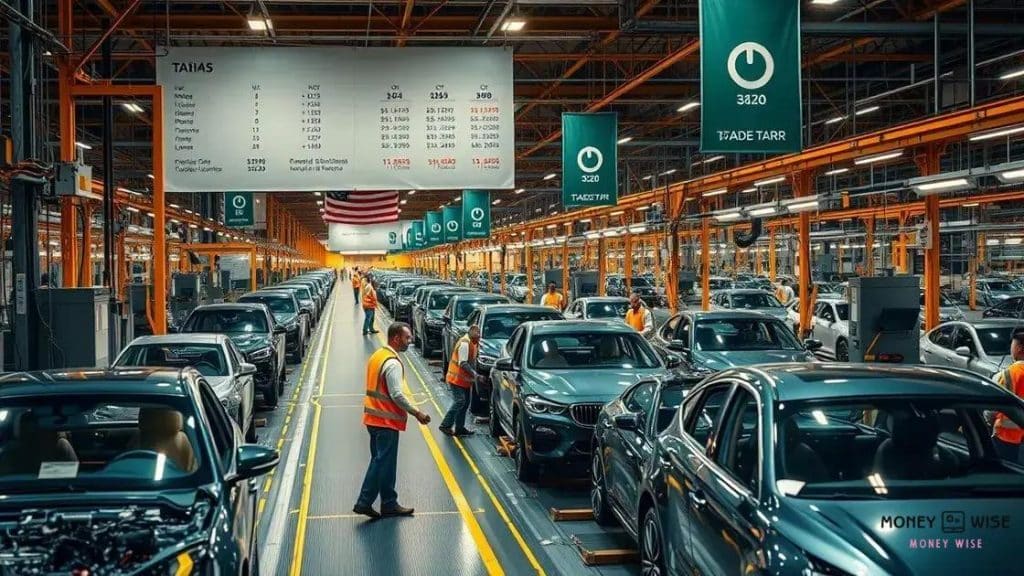Steel and aluminum tariff expansion: What to expect

The expansion of steel and aluminum tariffs in 2025 will lead to higher consumer prices, impact domestic manufacturing, and influence global trade relations as industries adjust to new costs and market dynamics.
Steel and aluminum tariff expansion 2025 is on the horizon, and it’s a topic that affects everyone from manufacturers to consumers.
Have you wondered how these changes will impact your wallet? Let’s explore.
Understanding the steel and aluminum tariffs
Understanding the steel and aluminum tariffs is crucial for anyone involved in the industry or affected by these changes.
Tariffs are taxes imposed on imported goods to protect domestic industries. With the expansion of these tariffs in 2025, it’s essential to grasp their implications.
What are steel and aluminum tariffs?
Steel and aluminum tariffs are designed to boost local manufacturing by making imported metals more expensive.
This action aims to secure jobs and stabilize the industry. Businesses that rely on these metals may face increased costs, impacting their pricing strategies.
Why are tariffs important?
These tariffs help create a level playing field for American manufacturers.
Without tariffs, foreign producers might undercut prices, leading to job losses in the U.S. economy.
While this can promote domestic production, it can also lead to higher prices for consumers.
- Support for local jobs and manufacturing
- Protection against unfair foreign pricing
- Impact on supply chains and costs
As we consider the future, it’s important to note how these tariffs will affect trade relationships.
Countries may respond with their tariffs, leading to potential trade wars.
Understanding the broader context of these tariffs can help industries prepare for upcoming challenges.
Constant monitoring of policy changes will be necessary to navigate this evolving landscape.
Key factors driving the tariff expansion
Several key factors are driving the expansion of tariffs on steel and aluminum in 2025.
These factors reflect both economic policies and market conditions that influence decision-making at the government level.
Understanding these elements is crucial for businesses and consumers alike.
Market protection
One major factor is the need for market protection. The U.S. government aims to shield domestic producers from foreign competition, which often benefits from lower production costs.
By raising tariffs, the government seeks to ensure that American manufacturers can compete effectively.
National security
National security is another important consideration.
Importing significant amounts of steel and aluminum from other countries raises concerns about reliance on foreign suppliers, especially during crises.
Tariffs are seen as a way to bolster local production capabilities, reducing vulnerability.
- Ensuring strategic resources are available domestically
- Reducing dependency on foreign countries
- Enhancing defense manufacturing capabilities
Economic pressures also play a role. Fluctuating prices in global markets can prompt tariff adjustments.
When international steel and aluminum prices fall, tariffs may be raised to stabilize the domestic market and protect producers.
Additionally, political factors contribute greatly to tariff expansion.
Trade policies are often influenced by elections, where candidates may adopt more protectionist views to appeal to workers in manufacturing sectors.
This political climate prompts quicker adjustments in tariff policies to align with societal interests.
Impact on domestic manufacturing
The impact on domestic manufacturing due to steel and aluminum tariff expansion is significant and multifaceted.
As tariffs increase, they create a protective environment for U.S. manufacturers, allowing them to compete against cheaper imports.

Increased production
One immediate effect is an increase in domestic production.
By making imported metals more expensive, local manufacturers are encouraged to ramp up their operations.
This leads to more job opportunities within factories that produce steel and aluminum.
Higher costs for industries
However, it’s essential to note that these tariffs can also lead to higher costs for industries that depend on these materials.
Construction, automotive, and appliance sectors may see an increase in operation costs, which could be passed on to consumers.
- Potential rise in consumer prices
- Pressure on margins for manufacturers
- Impact on product availability
As manufacturing grows, investment in technology and resources often follows. Companies may look to innovate processes to remain competitive.
Investments in automation and efficiency can lead to long-term benefits, shaping the future of the industry.
The supply chain dynamics will also shift as companies adjust to new market conditions.
While some industries may benefit from local sourcing, others might struggle with the limited availability of materials.
These changes will require businesses to adapt their strategies and operations accordingly.
Global trade relations and tariffs
Global trade relations are heavily influenced by tariffs, especially regarding steel and aluminum.
As countries negotiate trade agreements, tariffs can play a significant role in shaping these discussions.
Understanding this relationship is vital for businesses and consumers alike.
Impact on international relations
When one country imposes tariffs, it often leads to reciprocal actions from others.
This can create a cycle of tariffs that strains international relations. Countries may retaliate by imposing their tariffs on U.S. products, impacting various sectors.
Trade agreements
Tariffs are a focal point in trade agreements. Countries look to negotiate lower tariffs to facilitate smoother trade.
When tariffs on steel and aluminum are high, it can complicate trade agreements, leading to lengthy negotiations and potential stalemates.
- Negotiation of lower tariffs for mutual benefits
- Impact on the flow of goods and services
- Reshaping of supply chains globally
Additionally, certain countries may benefit from these tariffs while others face challenges.
For example, countries with abundant natural resources may find it easier to export raw materials.
This dynamic can shift as tariffs change, affecting prices and availability across markets.
Moreover, multinational companies often face complexities due to varying tariff structures in different countries.
Compliance becomes a challenge, requiring businesses to adapt their strategies to navigate these tariffs effectively.
This adaptation is crucial to remain competitive in an international market.
What consumers need to know about prices
When it comes to understanding prices in the context of steel and aluminum tariffs, consumers need to be aware of several key factors.
These tariffs can significantly impact the cost of various goods that rely on these materials.
Expect price increases
First and foremost, consumers should brace for price increases on products made with steel and aluminum.
This includes items like cars, appliances, and construction materials.
The additional costs from tariffs often trickle down to the final consumer, making it essential to plan accordingly.
Market volatility
The market can also be quite volatile due to ongoing tariff changes. Prices may fluctuate based on global supply and demand.
As domestic manufacturers adjust to new cost structures, consumers may see frequent price changes on shelves.
- Watch for seasonal pricing trends
- Compare prices across different retailers
- Stay informed about tariff updates
Additionally, consumers should consider long-term implications.
If tariffs remain in place, the cost of living may increase as businesses adjust their pricing to maintain profitability.
This can impact budgets for families and individuals alike.
Furthermore, being aware of government policies and trade discussions can provide insight into future price trends.
Consumers can better prepare for impacts by keeping track of news related to tariffs and trade agreements.
The expansion of steel and aluminum tariffs will significantly impact various sectors, from manufacturing to consumers.
As prices rise due to these tariffs, it’s essential for individuals and businesses to stay informed about market changes.
Understanding the factors driving these adjustments helps prepare for shifts in costs and product availability.
While the intention of tariffs is to protect domestic industries, careful monitoring of trade relations is crucial for navigating the evolving landscape of global commerce.
FAQ – Frequently Asked Questions about Steel and Aluminum Tariffs
What are steel and aluminum tariffs?
Steel and aluminum tariffs are taxes imposed on imported metals to protect domestic industries and ensure fair competition for U.S. manufacturers.
How do tariffs affect consumer prices?
Tariffs generally lead to higher prices on products that use steel and aluminum, such as cars and appliances, as manufacturers pass on the additional costs to consumers.
Why are tariffs implemented?
Tariffs are implemented to support domestic manufacturing, protect jobs, and reduce dependence on foreign suppliers, especially during economic uncertainties.
What should consumers expect in the future?
Consumers should expect ongoing price fluctuations and potential changes in product availability as industries adapt to new tariff regulations.
How can consumers stay informed about tariffs?
Consumers can stay informed by following news on trade policies, government announcements, and industry updates to better understand how tariffs may impact prices.





